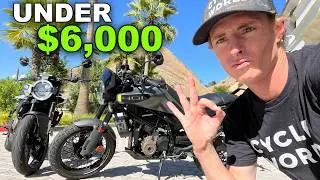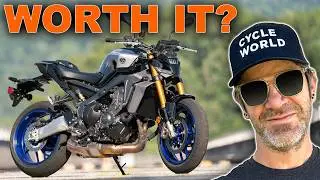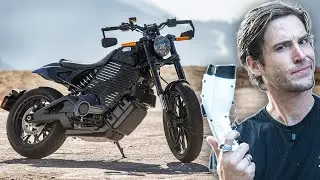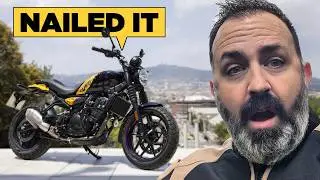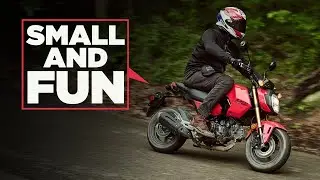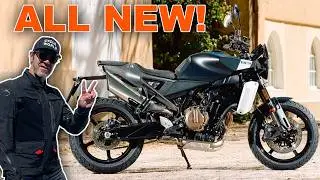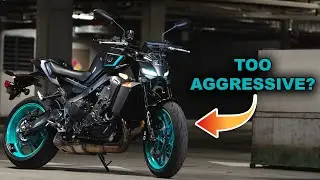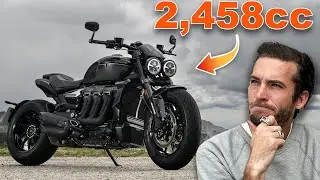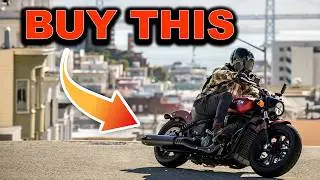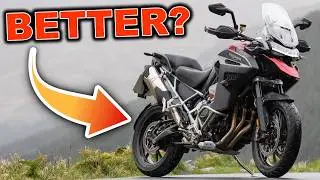2022 BMW M 1000 RR - Untapped Potential?
Cycle World’s official first ride review of the 2021 BMW M 1000 RR.
M is for magic.
The curbs lining Chuckwalla Valley Raceway’s intricate 2.68-mile layout are the bogeys to the 2021 BMW M 1000 RR’s fighter-jet precision. The Bavarian-built literbike’s locked-on attitude showcases years of the company’s racing endeavors and technical expertise, and the bike serves as a platform for developing future improvements.
Of course, the M 1000 RR is also a homologation special. Every bit of the bike’s design and performance is focused on gaining advantage within the scope of World Superbike technical regulations. The street-spec equipment is there merely to meet DOT requirements and ensure it qualifies as a for-sale streetbike in accordance with the rules of production-based racing. Yes, the $37,490 M is there for well-heeled trackday connoisseurs or even club racers, but its number one role is to give BMW Motorrad and its supported racing efforts a machine on which to work their magic in search of the ideal lap time.
What you get is a motorcycle that Motorrad touts as the first two-wheel model to join BMW’s iconic M-series. It’s a competition-minded offspring of the S 1000 RR, a bike which has been a contender in the open-class production literbike category since its introduction in 2009. The difference is that the M 1000 RR is sharper and more exotic, allowing the elite to race to glory.
As with the ripping S 1000 RR, the M RR uses the same basic 998cc inline-four with BMW’s ShiftCam Technology. It’s a spectacular engine in S form, but a number of internal components are altered with racing in mind. A set of lightweight titanium Pankl connecting rods, 2mm longer than before, move new lower-friction two-ring forged Mahle pistons. These lighter components kick redline to 15,100 rpm, 500 rpm higher than the S model. Compression ratio is bumped to 13.5:1 via a new combustion chamber profile, while valve-actuating finger followers have been redesigned for reduced weight. Even the titanium Akrapovič exhaust shaves 8 pounds in comparison to the exhaust system on the S 1000 RR.
The result of these revisions is a powerplant that, BMW Motorrad claims, undramatically produces 205 hp at 13,000 rpm in US trim, the same numbers as the S 1000 RR in stock configuration. The lighter parts and higher redline are simply waiting for racer mods so the bike can make competitive power at the track. Our test unit was flashed with the dealer-installed “torque map,” which we tested on the in-house Cycle World Dynojet 250i dynamometer. The M RR produced a peak 161.30 hp at 11,230 rpm and 77.07 pound-feet of torque at 9,250. Analyzing the curves indicates the optional flash eliminates the S model’s frustrating dip between 6,000 and 8,000 rpm, but power quickly signs off just after 11,000 rpm, leaving 4,100 rpm of overrev waiting to be uncorked with race-spec tuning changes.
That bumped midrange torque makes the M 1000 RR a missile on corner exits. The ripping initial acceleration was aided during our trackday test session by the superb grip of the Dunlop KR448 and KR451 racing slicks we mounted to our testbike; these gave us extra confidence when ripping gears after the apex, aided as we were by the seamless action of the standard bidirectional quickshifter. Even with the extra midrange, superb grip, and quickshifter, BMW’s over-complex electronic rider-aid package and a numb throttle connection damp the harmony of man and machine. Ride-by-wire throttle inputs don’t precisely match expected results most of the time. And the four basic levels of traction control in Ride Pro modes (Rain, Road, Dynamic, Race) each feature 15 further settings of adjustability, with +7 being the greatest level of intrusion and -7 the least, for a total of 60 selectable options. With many, many hours of seat time and tuning experience this might make sense, but it’s a lot to absorb.
After working with all these options in the time allowed by our one-day track test, I found that dialing the TC to a less intrusive setting (my preference was -4 with wheelie control reduced to level 1) provided the most visceral riding experience. This helped the M RR make the most of its linear power delivery and low-end grunt; it exhibited ripping corner-exit acceleration while perfectly maintaining low-trajectory MotoGP-style power wheelies as seen in slow-motion replays. Awesome.
It’s fair to say that the M RR’s racing-influenced chassis accepts hammering corner exits with little drama and superb drive grip...
For more:
Full story here: https://www.cycleworld.com/story/moto...
Subscribe to Cycle World Youtube: http://www.youtube.com/c/cycleworld?s...
Read more from Cycle World: https://www.cycleworld.com/
Buy Cycle World Merch: https://teespring.com/stores/cycleworld








